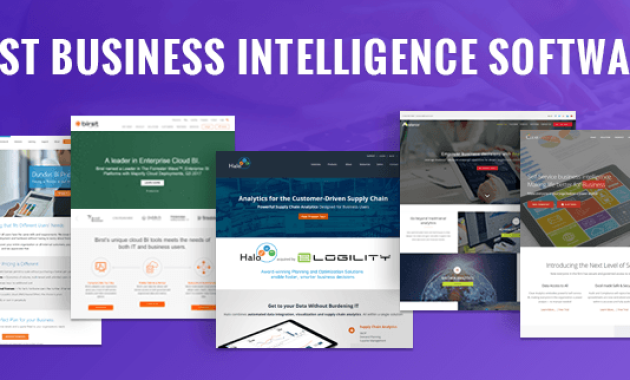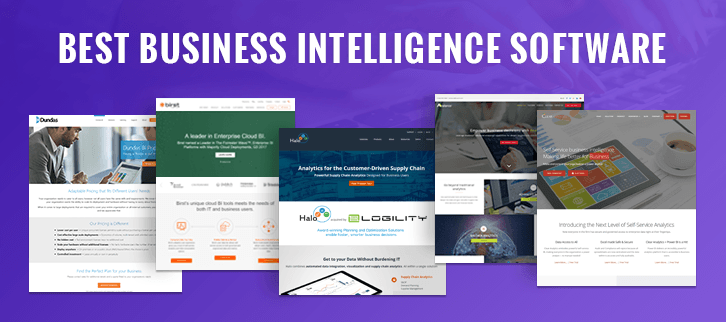
The Smart Way to Use Business Intelligence Software Backed by Data
In today’s data-driven world, businesses are drowning in information. However, simply having data is not enough. The key is to transform raw data into actionable insights. This is where Business Intelligence (BI) software steps in. This article explores the smart way to use business intelligence software, emphasizing a data-backed approach to drive informed decision-making and achieve tangible business outcomes. This is not just about implementing a new tool; it is about cultivating a data-centric culture.
Understanding the Power of Business Intelligence
Business intelligence software empowers organizations to collect, analyze, and visualize data. It transforms complex datasets into easily understandable reports, dashboards, and visualizations. This allows businesses to identify trends, spot anomalies, and gain a deeper understanding of their operations. Effective business intelligence software usage can lead to improved efficiency, increased profitability, and a competitive edge. The benefits extend across various departments, from sales and marketing to finance and operations.
Choosing the Right Business Intelligence Software
Selecting the right business intelligence software is crucial for success. The market offers a wide range of options, each with its strengths and weaknesses. Consider these factors:
- Business Needs: Define your specific goals and requirements. What questions do you need to answer? What data sources do you need to connect to?
- Scalability: Choose software that can grow with your business. Consider future data volume and user needs.
- Ease of Use: Opt for user-friendly software with intuitive interfaces. Training and support are also important considerations.
- Integration: Ensure seamless integration with your existing systems and data sources. Compatibility is vital.
- Cost: Evaluate the total cost of ownership, including software licensing, implementation, and maintenance.
Popular business intelligence software solutions include Tableau, Power BI, Qlik Sense, and Looker. Research and compare different options to find the best fit for your organization.
Data Preparation: The Foundation of Business Intelligence
Before analyzing data, it must be prepared. This involves cleaning, transforming, and organizing data from various sources. Data preparation is a critical step that directly impacts the accuracy and reliability of your insights. Poor data quality can lead to flawed analysis and incorrect decisions.
Here are key steps in data preparation:
- Data Extraction: Gather data from various sources, such as databases, spreadsheets, and cloud services.
- Data Cleaning: Identify and correct errors, missing values, and inconsistencies in the data.
- Data Transformation: Convert data into a consistent format, such as standardizing units of measurement.
- Data Loading: Load the prepared data into your business intelligence software.
Investing in data quality is an investment in the success of your business intelligence software implementation. Proper data preparation ensures that your analysis is accurate and reliable.
Data Analysis and Visualization
Once data is prepared, it’s time to analyze it. Business intelligence software provides tools for performing various types of analysis, including:
- Descriptive Analytics: Summarizing and describing past data.
- Diagnostic Analytics: Identifying the causes of past events.
- Predictive Analytics: Forecasting future trends and outcomes.
- Prescriptive Analytics: Recommending actions to optimize outcomes.
Data visualization is a powerful way to communicate insights. Choose appropriate charts and graphs to effectively convey your findings. Dashboards provide a consolidated view of key performance indicators (KPIs) and allow for real-time monitoring. Well-designed visualizations make complex data easier to understand and help stakeholders quickly grasp key insights. Effective data visualization is crucial for making data-driven decisions.
Implementing a Data-Driven Culture
Successfully using business intelligence software requires more than just the software itself. It requires a data-driven culture where data is valued and used to inform decisions at all levels of the organization. This involves:
- Executive Sponsorship: Leadership support is crucial for promoting a data-driven culture.
- Data Literacy: Training employees to understand and use data effectively.
- Data Governance: Establishing policies and procedures for data management and security.
- Collaboration: Encouraging collaboration and knowledge sharing across departments.
- Continuous Improvement: Regularly evaluating and refining your business intelligence software implementation and data analysis processes.
Building a data-driven culture is an ongoing process. It requires commitment, investment, and a willingness to adapt. The rewards, however, are significant: improved decision-making, increased efficiency, and a competitive advantage.
Real-World Examples of Business Intelligence Success
Many companies have successfully leveraged business intelligence software to achieve significant business outcomes. These examples demonstrate the power of data-driven decision-making:
- Retail: Retailers use business intelligence software to analyze sales data, identify customer trends, and optimize inventory management.
- Healthcare: Healthcare providers use business intelligence software to improve patient care, optimize resource allocation, and reduce costs.
- Manufacturing: Manufacturers use business intelligence software to monitor production processes, identify bottlenecks, and improve efficiency.
- Finance: Financial institutions use business intelligence software to detect fraud, manage risk, and improve customer service.
These examples illustrate the versatility of business intelligence software across various industries. The key is to identify your specific business needs and apply the software accordingly.
Best Practices for Smart Business Intelligence Usage
To maximize the value of your business intelligence software, follow these best practices:
- Start Small: Begin with a pilot project to demonstrate the value of business intelligence software.
- Focus on Key Metrics: Identify the most important KPIs for your business.
- Automate Reporting: Automate the generation and distribution of reports and dashboards.
- Train Users: Provide adequate training to ensure users can effectively use the software.
- Monitor and Evaluate: Regularly monitor the performance of your business intelligence software and make adjustments as needed.
- Stay Updated: Keep up-to-date with the latest features and trends in business intelligence software.
By following these best practices, you can ensure that your business intelligence software implementation is successful.
The Future of Business Intelligence
The field of business intelligence is constantly evolving. Emerging trends include:
- Artificial Intelligence (AI) and Machine Learning (ML): AI and ML are being integrated into business intelligence software to automate analysis, generate insights, and improve decision-making.
- Self-Service BI: Empowering business users to access and analyze data without relying on IT departments.
- Cloud-Based BI: Cloud-based business intelligence software offers increased flexibility, scalability, and cost-effectiveness.
- Data Democratization: Making data accessible to everyone in the organization, not just data specialists.
As these trends continue to develop, business intelligence software will become even more powerful and accessible. Businesses that embrace these advancements will be well-positioned to thrive in the data-driven future.
Conclusion: Data-Driven Success
The smart way to use business intelligence software is to approach it strategically, with a focus on data quality, effective analysis, and a data-driven culture. By following the guidelines outlined in this article, businesses can unlock the full potential of their data and achieve significant improvements in decision-making, efficiency, and profitability. The journey to becoming a data-driven organization requires commitment and continuous effort, but the rewards are well worth the investment. Embrace the power of data, and watch your business thrive.
[See also: Related Article Titles]

